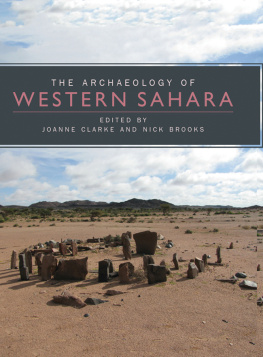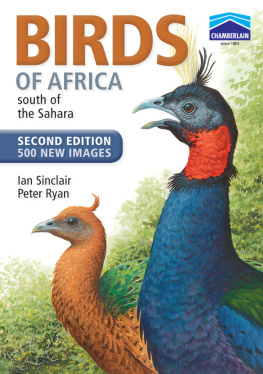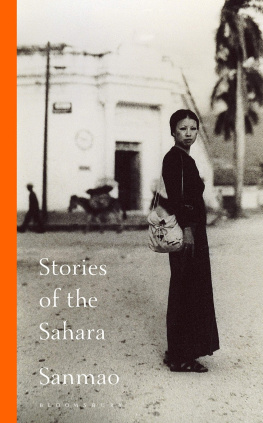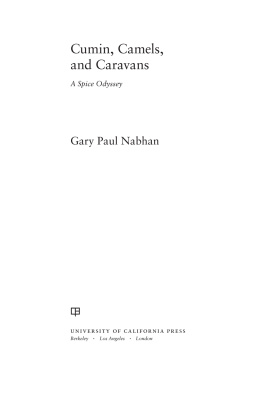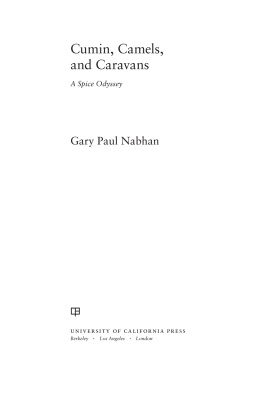AFRICAN ETHNOGRAPHIC STUDIES
OF THE 20TH CENTURY
Volume 9
CARAVANS OF THE OLD SAHARA
CARAVANS OF THE OLD SAHARA
An Introduction to the History of the Western Sudan
E. W. BOVILL
First published in 1933 by Oxford University Press for the International African Institute.
This edition first published in 2018
by Routledge
2 Park Square, Milton Park, Abingdon, Oxon OX14 4RN
and by Routledge
711 Third Avenue, New York, NY 10017
Routledge is an imprint of the Taylor & Francis Group, an informa business
1933 International African Institute
All rights reserved. No part of this book may be reprinted or reproduced or utilised in any form or by any electronic, mechanical, or other means, now known or hereafter invented, including photocopying and recording, or in any information storage or retrieval system, without permission in writing from the publishers.
Trademark notice: Product or corporate names may be trademarks or registered trademarks, and are used only for identification and explanation without intent to infringe.
British Library Cataloguing in Publication Data
A catalogue record for this book is available from the British Library
ISBN: 978-0-8153-8713-8 (Set)
ISBN: 978-0-429-48813-9 (Set) (ebk)
ISBN: 978-1-138-49101-4 (Volume 9) (hbk)
ISBN: 978-1-351-03334-3 (Volume 9) (ebk)
Publishers Note
The publisher has gone to great lengths to ensure the quality of this reprint but points out that some imperfections in the original copies may be apparent.
Disclaimer
The publisher has made every effort to trace copyright holders and would welcome correspondence from those they have been unable to trace.
Due to modern production methods, it has not been possible to reproduce the fold-out maps within the book. Please visit www.routledge.com to view them.
I. MUSA MALI, LORD OF THE NEGROES OF GUINEA
From a panel of the Catalan Map of Charles V (1375)
CARAVANS
OF THE
OLD SAHARA
AN INTRODUCTION
TO THE HISTORY OF THE
WESTERN SUDAN
By
E. W. BOVILL
Published for the
INTERNATIONAL INSTITUTE OF
AFRICAN LANGUAGES & CULTURES
by OXFORD UNIVERSITY PRESS
LONDON: HUMPHREY MILFORD
1933
TO
SYLVIA
CONTENTS
PRINTED IN GREAT BRITAIN
PREFACE
T HE importance to Christian Europe of the trade which it so long carried on with the Muhammadan states of the North African littoral has always been accepted, but the extent of its dependence on the desert caravan traffic with the negroid peoples of the Western Sudan has been little recognized.
The trans-Saharan trade wove ties of blood and culture between the peoples north and south of the desert, and it inspired the achievements by which, after centuries of failure, the mysteries of the remote interior were ultimately revealed to European nations.
The purpose of this volume is to outline briefly the growth of these associations and to win a measure of recognition for the part which the Western Sudanese have played in the history of civilization.
The Authors considerable indebtedness to his friends and to the works of others is briefly acknowledged in the notes. The references to the late Lady Lugards A Tropical Dependency, however, are no measure of his debt to that brilliant work. It was the enthralling interest of those pages, read amid the stirring scenes which inspired them, that first urged him to explore further the field in which Lady Lugard was the pioneer.
E. W. BOVILL
LITTLE LAVER HALL,
HARLOW .
6th February 1933.
MAPS
I. Musa Mali, Lord of the Negroes of GuineaFrom a panel of the Catalan Map of Charles V (1375)
Roman Africa
North-Western AfricaTenth to Sixteenth Centuries
Wangara and the Upper Niger
Hausa and the Middle Niger
North Africa in the Middle Ages
The Africae Tabula Nova of Ortelius (1570)
The Discoveries of the Portuguese
North-Western AfricaSixteenth and Seventeenth Centuries
The Africae Nova Descriptio of Blaeu (1665)
XI. The Carte de la Barbarie de la Nigritie et de la Guine of de Lisle (Elwe, 1792)
The Hausa States
XIII. The Principal Caravan Routes of the Nineteenth Century
Caelo terraque penuria aquarum. SALLUST
N ORTHERN Africa is divided into a series of natural zones running roughly parallel to each other from west to east. Along the Mediterranean sea-board lies a narrow strip of undulating country, generally known as the Tell, which enjoys a climate similar to that of southern Europe and is peopled by an agricultural peasantry. Behind these coastal hills lie the arid uplands of the High Plateaux which, although they culminate in the peaks of the Atlas, are for the most part steppe-like in character and support a pastoral and semi-nomadic population. These highlands drop sharply into the Sahara, the largest continuous desert on the earths surface, where extreme aridity imposes a nomadic existence on its sparse population. No natural frontier bounds the Sahara on the south. It gradually merges into steppes and these in turn give place first to savanna and then to park-lands, which, like the Tell, are peopled by a sedentary agricultural population. Beyond the parklands lies the great barrier of the equatorial forest.
The broad belt of broken country separating the Mediterranean from the Sahara and extending from Tripoli in the east to the Atlantic in the west has come to be loosely termed Barbary. The great plains which lie south of the Sahara, separating it from the equatorial forest, form the Beled es Sudan, an Arabic name meaning the Land of the Blacks. It extends from the Red Sea to the Atlantic, that part which lies to the west of Lake Chad forming the Western Sudan.
Although Barbary and the Western Sudan are separated by a desert which forms one of the worlds greatest barriers to human movement the cultural and economic development of both has been profoundly affected by intercourse between the two. The Sahara consequently dominates the whole of the history of the interior of northern Africa.
A slight increase in the aridity of this immense desert would produce far-reaching political consequences. It would drive the wild desert tribes into the settled uplands and plains of Barbary and the Sudan, and it would so extend the waterless stages that the caravan routes would become impassable to camels and therefore to men. A correspondingly slight increase in rainfall would quickly multiply the water-holes and desert pastures, render man independent of the now necessary camel, and, by making his life more endurable, tame the nomad. Whether there has been any material change in the climate of the Sahara in historical times is therefore a question of great importance to the student of history.






